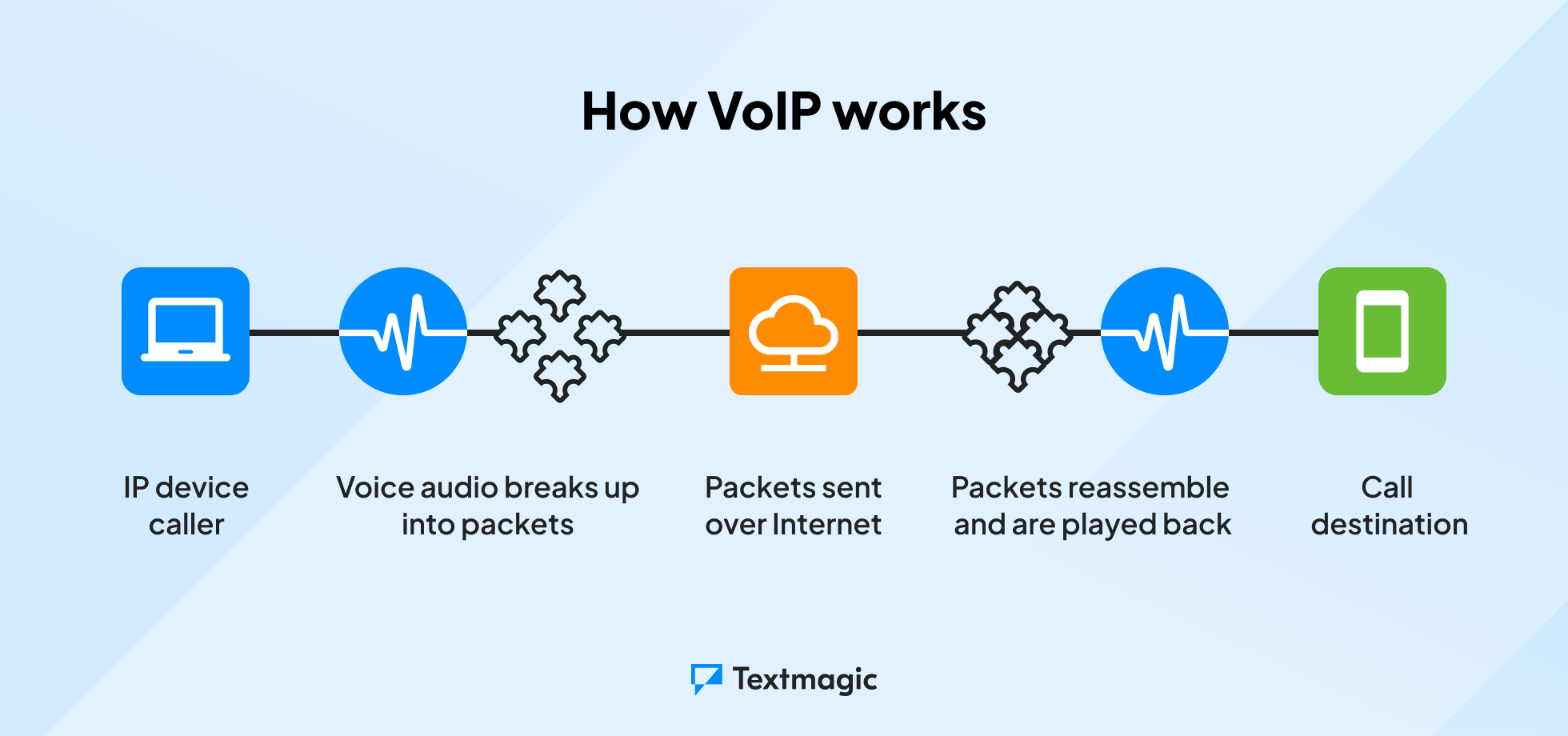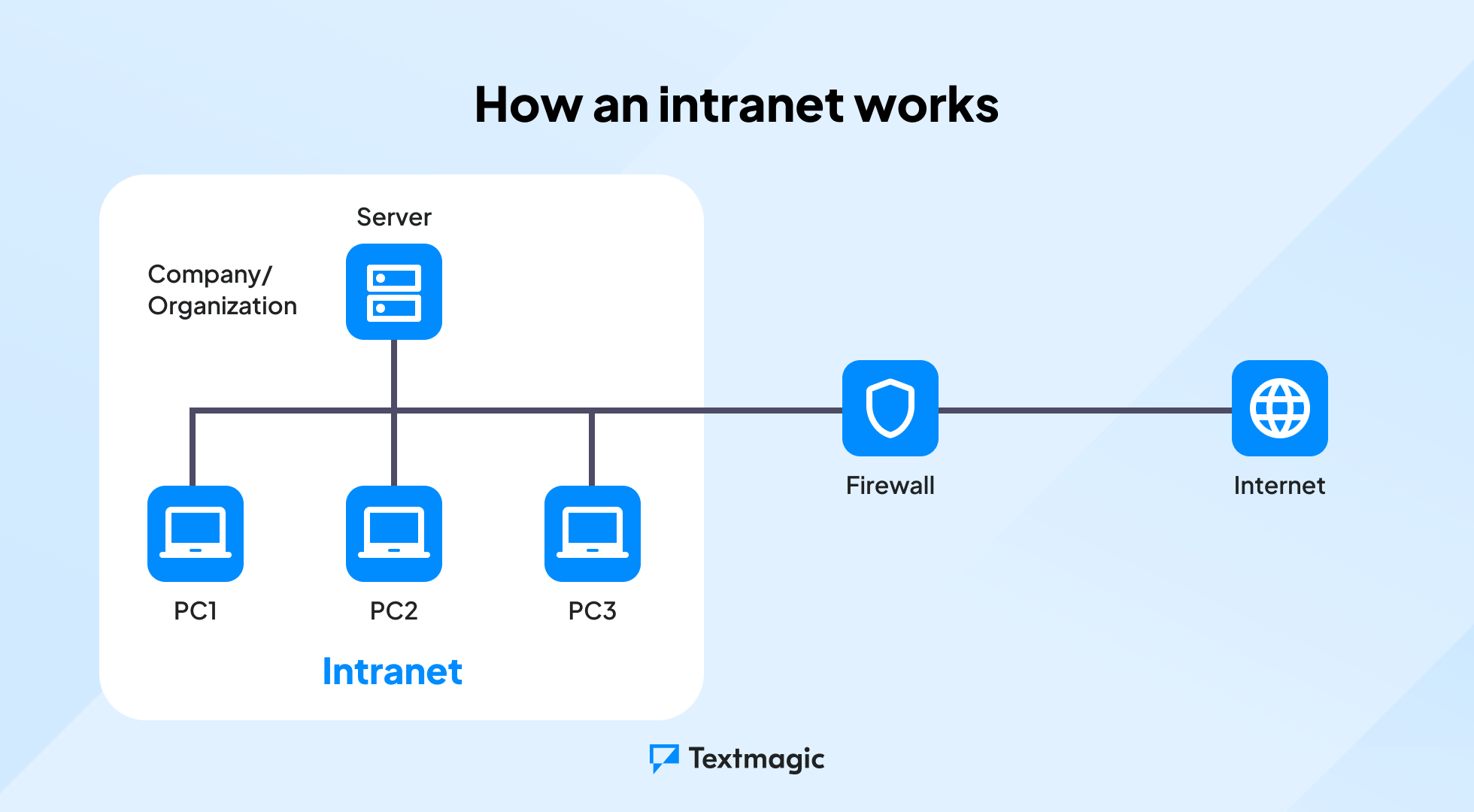
Efficient communication is the cornerstone of business success. Achieving it ensures that information is clearly conveyed and understood while keeping teams aligned.
A recent study published by Forbes uncovered that 89% of workers have been impacted by ineffective communication at their jobs in various ways—with 49% stating that it affected their productivity the most.
Selecting the right business communication channels for your company is thus essential. In this article, we will explore the best options, offering insights into the pros and cons of each one and a few tips on how to make your choice.
What is a business communication channel?
A business communication channel is a medium through which information is transmitted in a business environment. Its purpose is to simplify interactions among employees and teams both inside and outside of an organization.
There are two main types of business communication channels:
- Internal: Used within a company and can include in-person meetings, internal emails, memos, newsletters, intranet, and enterprise social media platforms.
- External: Facilitate communication between a company and external entities like customers, investors, and partners through channels such as social media, email blasts, or text messaging.
The communication channels used in business are essential for strategic alignment, decision-making, and maintaining operational efficiency. Depending on the parties involved, they can range from more formal formats to informal interactions.
Top communication channels in business
There are many business communication channels out there that can benefit your company’s strategy and contribute to its ultimate success. In the sections below, we’ve listed the top choices to consider.
1. In-person communication
In-person communication consists of all the interactions where people physically meet to exchange ideas and feedback. It usually consists of face-to-face dialogue, allowing participants to observe non-verbal cues such as body language, tone of voice, and facial expressions.
Pros
- Enhances trust and understanding
- Facilitates real-time problem-solving
- Allows for immediate feedback
Cons
- Limits the number of participants
- Requires significant time for planning
- Can involve travel & accommodation costs
2. Text messaging
Texting has become a staple for business communication, allowing parties to share information both internally and externally easily. Messages are delivered and read almost instantly, facilitating real-time responses and updates. This speed is essential in resolving inquiries, confirming details, or handling emergencies swiftly.
Pros
- Higher open rates compared to email
- Allows for the quick exchange of information
- Conveniently available on mobile devices
Cons
- Character limits can be restrictive
- Lacks non-verbal cues and nuance
- Can be perceived as too casual in some contexts
When using text messaging as a channel for business communication, several privacy and compliance aspects must be considered. Encryption and record keeping are vital, as is adherence to all relevant regulatory frameworks, such as GDPR in Europe and the TCPA in the United States.
Using a business texting tool such as Textmagic for your internal and external communications ensures compliance with local laws and secures each exchange by default.
3. Email
Email is a fundamental internal and external-facing channel for business communication. It supports sending messages, documents, and important updates quickly and efficiently, enabling businesses to maintain regular communication with employees, customers, and partners.

Pros
- Reliable record of all past interactions
- Scalable for mass communication
- Universally recognized and respected
Cons
- Can lead to information overload
- Requires consistent Internet access
- Susceptible to various cyber-threats
Popular business email services include Gmail and Microsoft Outlook.
4. Business messaging apps
Business messaging apps are known for enabling efficient real-time communication and collaboration within companies of all sizes. They are designed to enhance team coordination and project management through instant messaging, file sharing, and group chats.
Pros
- Enables instant communication
- Supports teamwork through chats
- Can be used on any device
Cons
- Creates distractions through notifications
- High message volumes lead to overload
- Scattered communication across platforms
Popular business messaging apps include Slack and Microsoft Teams.
5. Video conferencing tools
Video conferencing is a staple in today’s remote work environment. It bridges geographical gaps through real-time, face-to-face interaction among team members, clients, and stakeholders. This channel has become essential in the era of distributed teams by supporting quick and reliable connections with both internal and external parties.
Pros
- Connects people globally in real-time
- Facilitates large meetings or webinars
- Visual cues for improved engagement
Cons
- Reliance on Internet connectivity
- Potential security vulnerabilities
- Prolonged use can lead to mental exhaustion
Popular video conferencing apps for business include Zoom, Google Meet, and Skype.
6. VoIP and internet calling
Voice over Internet Protocol (VoIP) technology allows voice calls to be transmitted over the Internet rather than through traditional telephone lines. It works by converting voice signals into digital data packets.
Compared to traditional telephony, VoIP offers greater scalability and integration with other digital services. However, unlike traditional phones, which can operate during power outages without needing bandwidth, VoIP relies heavily on Internet connectivity.

Pros
- Cheaper than traditional phone services
- Can be used anywhere with Internet access
- Easily scales with business growth
Cons
- Call quality can fluctuate with bandwidth
- Complex compliance depending on the region
- Requires stable and high-speed Internet
7. Social media platforms
Social media for business communication and customer engagement is a dynamic channel for companies to receive instant feedback from target audiences. It builds community and creates brand awareness, which contributes to the success of marketing efforts.

Pros
- Broad access to a global audience
- Immediate interaction with customers
- Consumer behavior and feedback insights
Cons
- High risk of negative publicity
- Requires constant content creation
- Difficulty in measuring impact on sales
Popular social media platforms for business are LinkedIn, Facebook, and YouTube.
8. CRM systems
Customer relationship management (CRM) systems integrate various modes of communication into a single platform to log interactions and data effectively. They are designed to centralize customer information, enabling personalized marketing, sales engagement, and customer service.
Pros
- Single source for all customer interactions
- Automates and streamlines communication
- Offers insights into customer behavior
Cons
- Can be difficult to implement
- Can have a steep learning curve
- Resource-intensive setup and maintenance
Popular CRM tools for businesses include Salesforce and Pipedrive.
9. Project management tools
Project management tools streamline business communication by centralizing information, facilitating collaboration, and tracking project progress. These tools integrate everything from tasks to files within a single platform, keeping all team members on the same page.
For example, a company operating in the construction industry can use a project management tool to coordinate among architects, contractors, and clients. This will enable real-time updates on project milestones and scheduling, ensuring that all parties have access to the latest information.
Pros
- One place for project-related assets
- Facilitates teamwork regardless of location
- Automates task updates and reminders
Cons
- Costs might be too big for smaller projects
- Can lead to information overload
- Can be complex to set up and use
Popular project management tools for businesses include Jira, Asana, and Trello.
10. Traditional phone systems
Traditional phone systems still play a vital role in modern business communication, especially because they provide a reliable form of communication that anyone can use. They’re most often used for formal business dealings, customer service, and in areas with poor Internet connectivity.
Pros
- Easy to use with minimal training
- High quality independent of bandwidth
- Less susceptible to modern threats
Cons
- Installation and subscription can be expensive
- Lacks the mobility and versatility of VoIP
- Limited scalability as adding lines is costly
11. Centralized intranets
Intranets are private networks within companies, accessible only to their employees. They play a crucial role in internal communication by serving as a centralized digital hub where team members can access company news, internal resources, and project documentation.
For example, a hospital might use an intranet to distribute medical protocols, schedule staff shifts, and share updates on patient care practices. This helps the healthcare provider enhance coordination and compliance across multiple departments.

Pros
- Unified source for all corporate resources
- Reduces time spent searching for docs
- Can be tailored to suit specific needs
Cons
- Requires significant investment
- Restricts external communication
- Increases the impact of security breaches
12. Enterprise social networks
Enterprise social networks (ESNs) are private platforms created to facilitate communication and collaboration within a company. Unlike public social media platforms, which are accessible to anyone, ESNs are restricted to members of a specific organization or invited external partners.
Pros
- Captures valuable insights and knowledge
- Increases employee engagement
- Reinforces a positive company culture
Cons
- User adoption can be a difficult journey
- Requires ongoing moderation
- Can become a distraction if misused
Popular enterprise social networks include Microsoft Yammer and Jive.
How to choose the best communication channel for your business
Choosing the best communication channel for your business involves careful consideration of several key factors. To make an informed decision, start by asking the following questions:
What are your business’s specific communication needs? Identify the primary purpose your communication channel needs to serve—whether it’s daily internal team communication, customer support, external marketing, or all of these simultaneously.
Who are the users? Consider your target audience and their degree of tech-savvyness. You need to base your selection on who will use the business communication channel.
What is our budget? Determine how much your business can afford to spend on communication tools. This includes both initial setup costs and ongoing expenses.
What kind of integration is needed? Evaluate how the communication channel needs to integrate with other systems and tools your business already uses.
How sensitive is the information you’re sharing? Sensitive data requires additional layers of protection in order to comply with the relevant laws and regulations in your industry. Take that into account when determining which solution fits your company.
Based on your answers to the above questions, you should have a look at:
- Product functionality and features
- Compatibility with your existing infrastructure
- User-friendliness and accessibility
- ROI when comparing costs to efficiency
- Security and compliance with relevant regulations
By evaluating these crucial aspects, you will be able to choose a business communication channel that will not only meet your immediate needs but also scale alongside your company.
Best practices for business communication
Having a well-thought-out strategy for the business communication channels that your company uses is the surest way to increase efficiency across in-office, hybrid, and remote-first work environments alike. Here are some best practices to consider:
- Maintain routine check-ins to keep all team members aligned and informed.
- Clearly define communication goals and expectations to avoid misunderstandings.
- Use the right tools for the type of communication required, be it video calling, texting, etc.
- Implement open channels for feedback to encourage transparency.
- Schedule communications to accommodate different time zones and schedules.
Sign up for Textmagic today!
Conclusion
Different types of business communication channels have unique benefits. From enhancing real-time collaboration to streamlining information dissemination, the right tools are pivotal in boosting productivity and operational efficiency across the board.
To ensure you’re making the right choice for your company, you should critically assess your current communication strategy. Consider the insights we’ve outlined for each channel in this article and decide how integrating new tools can optimize your approach.
Making informed choices in your communication tools can significantly improve how your team connects and collaborates—an essential part of business success.
Frequently Asked Questions (FAQs)
The main types include verbal (in-person or phone), written (emails, reports), digital (chat, SMS, project tools), and visual (presentations, infographics). These channels support both internal and external business communication.
Email remains one of the most widely used business communication channels, but SMS and instant messaging are growing rapidly due to their speed and convenience. Textmagic support both.
The seven elements are the sender, message, encoding, channel, receiver, decoding, and feedback. Each plays a role in how effectively information is exchanged between parties.
Yes. Textmagic is a business communication platform that enables companies to send SMS, email, and WhatsApp messages, making it ideal for customer support, marketing, and internal updates.
Related articles
Top 20 best marketing automation tools to use in 2025
Explore the best marketing automation tools, with de...
How to calculate customer health score and slash churn rates
Customer health scores are metrics that reduce custo...
11 Cancellation email response templates and useful tips
Knowing how to respond to a cancellation email from ...
The ultimate guide to professional appreciation emails: 16 Templates and best practices
Whether you’re thanking a customer for their b...
10 Examples of critical success factors to transform your support
Customer service is vital for success, often surpass...




